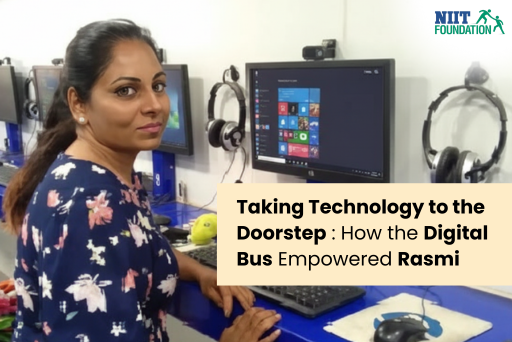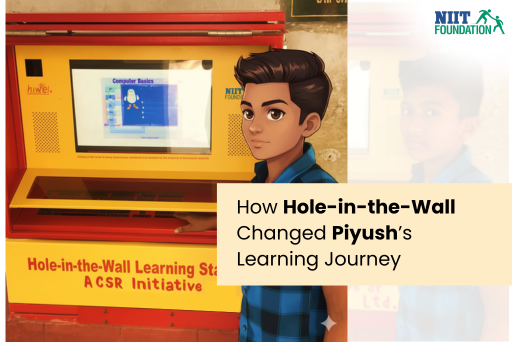There is no doubt that education is a key driver for economic and social mobility for individuals in any country. However, millions of underprivileged youth struggle to access quality education. Traditional classroom-based education systems are limited, and students face a variety of challenges in accessing the same because of financial instability, work commitments, and limited availability to physical teaching infrastructure. To address these challenges among others, technology is being harnessed to make learning more accessible and inclusive for underprivileged youth.
Learning Management Systems (LMS) are transforming vocational training for disadvantaged youth to support education initiatives. The NIIT Foundation has enabled LMS access for underserved youth, by providing them an online platform to continuously learn while enrolled in skill-building training.
One of the most important advantages of LMS platforms is accessibility. In many underserved communities, physical classrooms and training centers are either too expensive or too far away. LMS platforms are therefore introduced to solve this challenge by delivering learning resources online, allowing youth to acquire new skills without the need to travel at a lower cost. Now that over 82 percent of rural youth are able to access the internet through mobile phones and other devices, vocational training through LMS is available to millions of young people regardless of their socio-economic background.[ https://www.business-standard.com/india-news/over-82-of-rural-youth-able-to-use-internet-in-india-says-govt-survey-124100901062_1.html] This is particularly important to acquire job-relevant skills.
LMS also introduces scalability to learning initiatives. Unlike traditional classrooms that are limited by physical space, LMS can accommodate lakhs of students at once. This means that organizations enabling vocational training for underserved areas, can reach a much larger audience without a significant increase in costs. Scalability is important to meet the growing demand for skill-oriented training in fields like IT, healthcare, and digital marketing.
A challenge that many face in rural and underserved areas is that they are unable to undertake classroom based training because they are often occupied by other commitments during the day. LMS platforms offer flexibility to these students, allowing them to study at their own pace. Education therefore does not come at the expense of their responsibilities towards their families, and makes it possible for youth to upskill simultaneously.
Looking ahead, LMS platforms are expected to evolve with the introduction of new technologies. Advancements in virtual reality, augmented reality and artificial intelligence have the potential to make vocational training more engaging and immersive. The government, NGOs and private enterprises should work together to keep improving LMS platforms. Ultimately, LMS technology has already proved to be an equalizer by breaking existing barriers. This is an outcome of nonprofits, such as NIIT Foundation, spearheading LMS integration into their initiatives. It is now imperative that access to LMS should be scaled to reach every aspirational learner across underserved areas.
















